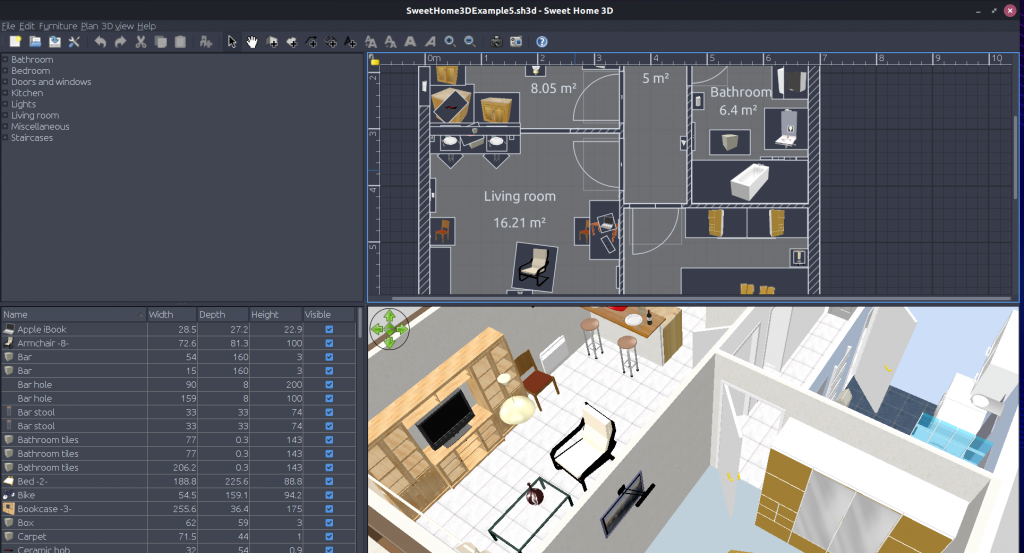Welcome to Volume 2, the 3D Horror RPG. A far more involved game design relying on everything you learned in Volume 1, and more. If you remember, in Volume 1, Issue 1, we created a 3D world in an hour. We’re about to use equally clever tricks to generate a scary 3D House…
1. Ideas and Game Design
Volume 1 was pretty simple. You were the good guy. There were some bad guys. Everyone flew around trying to shoot each other to score. It was no more involved than that. Ergo, the media required little more than a game world, aircraft, firing sounds, a hud (etc.). We’re now, however, talking about a “Role Playing Game” (RPG), and by definition that means we need to take a whole lot more time considering what the game will be about and how it will look, feel and play. Some considerations:
- The basic game idea (story).
- Concepts (look and feel).
- Gameplay (single player, multi-player, mechanics).
- Game Characters (the player and non-player characters – NPCs).
- Game Progression / Level Design.
- The user interface / GUI.
- Other media (audio, music).
- …
Your plan / design needn’t be overly detailed. It’s really up to you, but, we would add that the more you have worked out in advance, the better.
2. The Volume 2 Game Concept
After taking his own life, Arthur Mann finds himself in a house, while a storm rages outside. No one can see Arthur, he is a ghost. He hears a voice, explaining that the punishment for taking his own life, is to take the lives of others. By all accounts, Arthur is now Death himself…
Simple enough, right? As an elevator pitch, it opens up a whole world of possibilities. Our thinking, is that our new RPG will be somewhat puzzle based (as most RPGs are, at least in part), and a little bit like the Final Destination films, only in reverse! The player, will have to work out how to kill off the residents of the house in bizairre, unusual, but plausible situations. As the game progresses, more of Arthur’s back story will be revealed and we’ll learn about the house residents (NPCs) before we off them in glorious gory horror style.
3. One 3D House, Fast!
You might think creating a full 3D House would be very involved. Certainly a level beyond the 3D Terrain required for Volume 1. You would be correct and, well, not correct. It can be very involved, or we can get across the line far quicker if we’re not too picky. We’re going to use a free piece of software called Sweet Home 3D (downloads for Windows, Linux and Mac can be found at http://www.sweethome3d.com/download.jsp). Go ahead and install SH3D, and run the program
SH3D lets you draw floor plans, decorate interiors and exteriors, paint the walls, add furniture items, and a whole lot more. You could spend a large amount of time creating and tweaking your house in SH3D or, as we’re going to do, you could lean on one of their demo houses available here – http://www.sweethome3d.com/gallery.jsp. Simply select your preferred house, download the SH3D file, and hit File->Open from within SH3D to load the model.
We recommend creating a house with only one storey, at least the first time you attempt a game like this. We’ll discuss this more in a future issue. It essentially imposes some design decisions and development we’d sooner avoid, at least for now, in the spirit of “my game fast“.
We opted to use the example named “SweetHome3DExample5.sh3d“, you may wish to choose otherwise. You may also wish to modify the house, perhaps using these assets: http://www.sweethome3d.com/freeModels.jsp.
Whichever way, you should ultimately end up with something looking a bit like this:

We now need to have our new creation in a format that can used in our game. The SH3D format is specific to the software, and not something we can readily import elsewhere. From within SH3D, use the top menu and select 3D View -> Export to OBJ Format. We suggest saving the result in a dedicated folder since it will include 2 files being exported along with a number of images. The key 2 files are an OBJ file, that represents the 3D model, and a Material (MTL) that dictates how it should be painted, by leaning on the images (textures). The OBJ format is widely supported, you can read more about it on this Wikipedia page.